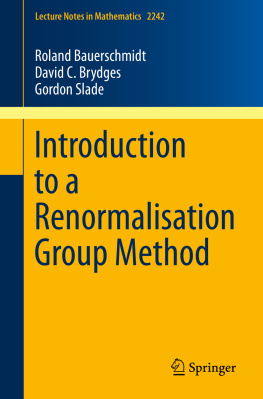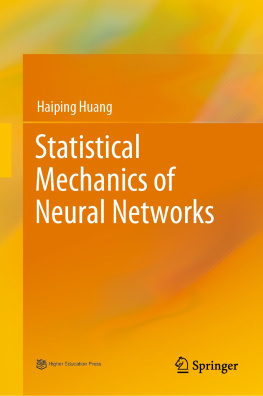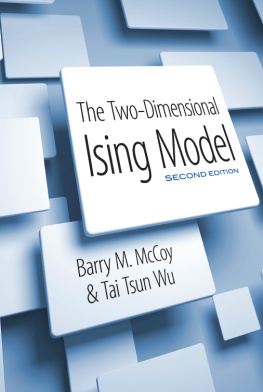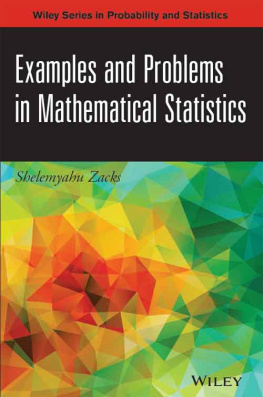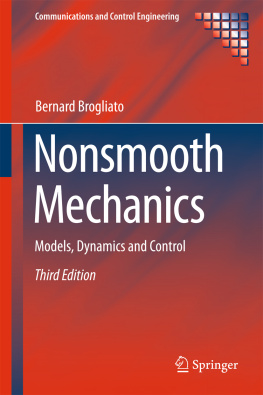Roland Bauerschmidt
Department of Pure Mathematics and Mathematical Statistics, University of Cambridge, Cambridge, UK
David C. Brydges
Department of Mathematics, The University of British Columbia, Vancouver, BC, Canada
Gordon Slade
Department of Mathematics, The University of British Columbia, Vancouver, BC, Canada
ISSN 0075-8434 e-ISSN 1617-9692
Lecture Notes in Mathematics
ISBN 978-981-32-9591-9 e-ISBN 978-981-32-9593-3
https://doi.org/10.1007/978-981-32-9593-3
Mathematics Subject Classication (2010): 60G15 60K35 82B27 82B28 82B41
Springer Nature Singapore Pte Ltd. 2019
This work is subject to copyright. All rights are reserved by the Publisher, whether the whole or part of the material is concerned, specifically the rights of translation, reprinting, reuse of illustrations, recitation, broadcasting, reproduction on microfilms or in any other physical way, and transmission or information storage and retrieval, electronic adaptation, computer software, or by similar or dissimilar methodology now known or hereafter developed.
The use of general descriptive names, registered names, trademarks, service marks, etc. in this publication does not imply, even in the absence of a specific statement, that such names are exempt from the relevant protective laws and regulations and therefore free for general use.
The publisher, the authors and the editors are safe to assume that the advice and information in this book are believed to be true and accurate at the date of publication. Neither the publisher nor the authors or the editors give a warranty, express or implied, with respect to the material contained herein or for any errors or omissions that may have been made. The publisher remains neutral with regard to jurisdictional claims in published maps and institutional affiliations.
This Springer imprint is published by the registered company Springer Nature Singapore Pte Ltd.
The registered company address is: 152 Beach Road, #21-01/04 Gateway East, Singapore 189721, Singapore
Preface
This book provides an introduction to a mathematically rigorous renormalisation group method which is inspired by Kenneth Wilsons original ideas from the early 1970s, for which he was awarded the 1982 Nobel Prize in Physics. The method has been developed and applied over the past 10 years in a series of papers authored by various subsets of the present authors, along with Martin Lohmann, Alexandre Tomberg and Benjamin Wallace.
We present the general setting of the problems in critical phenomena that have been addressed by the method, with focus on the 4-dimensional | | 4 spin system and the 4-dimensional continuous-time weakly self-avoiding walk. We give a self-contained analysis of the 4-dimensional hierarchical | | 4 model, which is simpler than its Euclidean counterpart but still reveals many of the ideas and techniques of the renormalisation group method. We comment on, and give detailed references for, the extension of the method to the Euclidean setting in Chap.. The book is intended to be a starting point for a reader who may not have prior knowledge of the renormalisation group method.
The book originated from lecture notes that were prepared for courses at several summer schools. Subsequently, the lecture notes were significantly developed and rewritten. The courses were given at:
The Summer School in Mathematical Physics, Analysis and Stochastics, Universitt Heidelberg, July 2126, 2014
The MASDOC Summer School on Topics in Renormalisation Group Theory and Regularity Structures, University of Warwick, May 1115, 2015
The Third NIMS Summer School in Probability: Critical Phenomena, Renormalisation Group, and Random Interfaces, National Institute for Mathematical Sciences, Daejeon, June 1519, 2015
The Workshop on Renormalization in Statistical Physics and Lattice Field Theories, Institut Montpellirain Alexander Grothendieck, August 2428, 2015
The EMS-IAMP Summer School in Mathematical Physics: Universality, Scaling Limits and Effective Theories, Rome, July 1115, 2016
The Bilbao Summer School on Probabilistic Approaches in Mathematical Physics, Basque Center for Applied Mathematics, July 1722, 2017
We are grateful to Manfred Salmhofer and Christoph Kopper in Heidelberg; to Stefan Adams in Warwick; to Kyeong-Hun Kim, Panki Kim and Hyunjae Yoo in Daejeon; to Damien Calaque and Dominique Manchon in Montpellier; to Michele Corregi, Alessandro Giuliani, Vieri Mastropietro and Alessandro Pizzo in Rome; and to Stefan Adams, Jean-Bernard Bru and Walter de Siqueira Pedra in Bilbao for organising these events and for the invitations to lecture.
We are especially grateful to Alexandre Tomberg who gave tutorials for our courses in Heidelberg and Daejeon and to Benjamin Wallace who gave tutorials in Bilbao. Each has contributed in several ways during the early stages of the writing of this book.
This work was supported in part by NSERC of Canada, by the US NSF under agreement DMS-1128155 and by the Simons Foundation.
Notation
Throughout this book, we use the following notational conventions:
x = o ( y ) means that xy 0 as yy 0 , where y 0 is supplied by the context.
x = O ( y ) means that there exist C , such that | xy | C for | yy 0 |< , where y 0 is supplied by the context.
x = Oz ( y ) means that x = O ( y ) as yy 0 with z fixed, where y 0 is supplied by the context.
AB means A = B (1+ o (1)).
AB means C 1ABCA for a universal constant C >0.
AB means A = cB for some constant c >0 (which can depend on parameters).
For x =( xi ) iI and y =( yi ) iI , we write ( x , y )= iIxiyi , where the index set I is supplied by the context.

